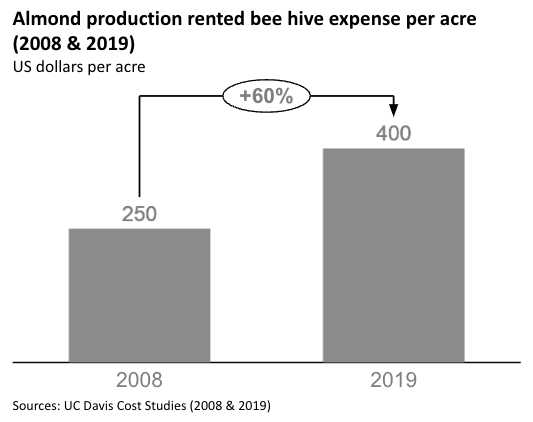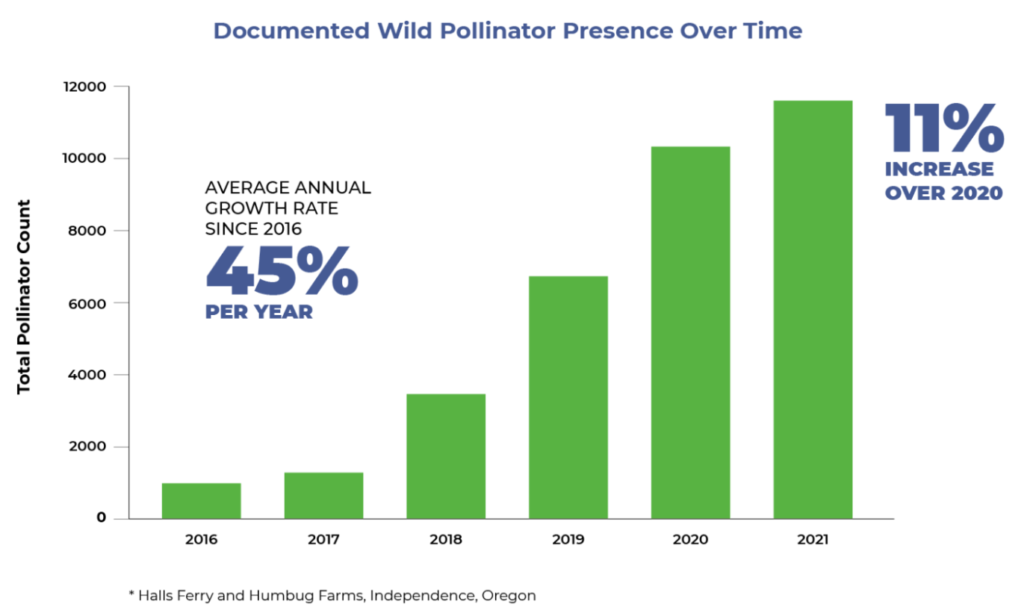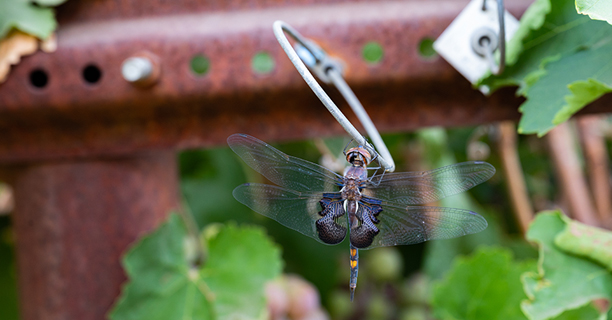Before you read any further, we highly recommend you reference the article published by bioGraphic and The Atlantic featuring Agriculture Capital’s work to restore wild pollinator populations on our farms. When it comes to illuminating important topics in an entertaining fashion, we gladly defer to both publications. Below, we provide a slightly condensed view of the pollinator problem facing agricultural production worldwide.
Pollinator decline is a problem. For at least the past 15 years, the annual loss rate of managed bee colonies in the US has been 30–50% — a remarkable rate. Bees and other pollinators are clearly adversely affected by myriad factors including habitat fragmentation, certain chemicals commonly used in agriculture, pathogens, predators, and climate change. Note this problem is not unique to the US, and the problem is likely worse for wild bees, which face the same pressures as managed honey bees plus additional competition from honey bees, which are an introduced and highly successful invasive species in North America.

It is not only the lack of total pollinators that presents a problem but also dwindling biodiversity among pollinators. As author Ashley Braun puts it, “It’s like a stock portfolio that isn’t diversified. Less diversity may limit the ability of ecosystems to function in the face of major disruptions such as climate change…”
The implications to food production, food security, and public health are stark:
- Fewer pollinators means lower crop yields and therefore less food.
- Less diversity of pollinators means greater risk associated with disruption to a limited number of pollinator species.
- Food prices, particularly for healthy foods, will likely increase as reliance on managed hives increases.

- Pollinators improve public health. One study from the Harvard University School of Public Health, “establishes that loss of pollinators is already impacting health on a scale with other global health risk factors, such as prostate cancer or substance use disorders.”
AC has carefully considered the problem and options to address it since 2014. With some direction from the Xerces Society for Invertebrate Conservation, we have invested in native pollinator habitat such as hedgerows, cover crop, and understory plantings in order to foster growth in wild pollinator populations. The results have been promising. Two of our farms in Oregon’s Willamette Valley experienced 45% compounded annual growth in wild pollinator presence between 2016 and 2021, and we estimate these farms are still 3–7 years from reaching ecological carrying capacity, indicating additional room for growth. Further, the results appear to be replicable across other farms.

We proudly promote these results in hopes other growers will make similar efforts. We also admit our pollinator focus is not entirely altruistic. Wild pollinator presence on our farms likely improves yields and fruit quality and reduces expenditures on managed hives. We are actively working to quantify these impacts.
Perhaps most importantly, we have a clearer view now on what we cannot control that must happen in order to ensure pollinators are protected on a large enough scale:
- Customers and consumers should be willing to pay more for products that promote pollinator health or otherwise give preference to these products over products that do not consider pollinator health. Encouragingly, large grocery retailers such as Walmart and Whole Foods have publicly announced initiatives focused on pollinators in their supply chains. However, specific plans are unclear. From the perspective of a grower and packer, the most impactful incentives these companies can offer are 1) price premiums for third-party-certified pollinator-friendly products, such as those certified under the Xerces Society’s Bee Better program; or 2) better market access for pollinator-friendly products.
- The public sector must also do more to incentivize pollinator-friendly production practices. Conservation programs historically have received a fraction of the public funds of insurance and crop programs, which often promote extractive practices. Among federal conservation funds available to growers, we expect a small portion are directed specifically toward pollinator conservation and restoration.

- Finally, more research is always helpful, but it should not delay action. Research can help point the private sector and policy makers toward the most pressing problems and most effective solutions, but we must also recognize that waiting for the perfect solution is not an excuse for inaction.
